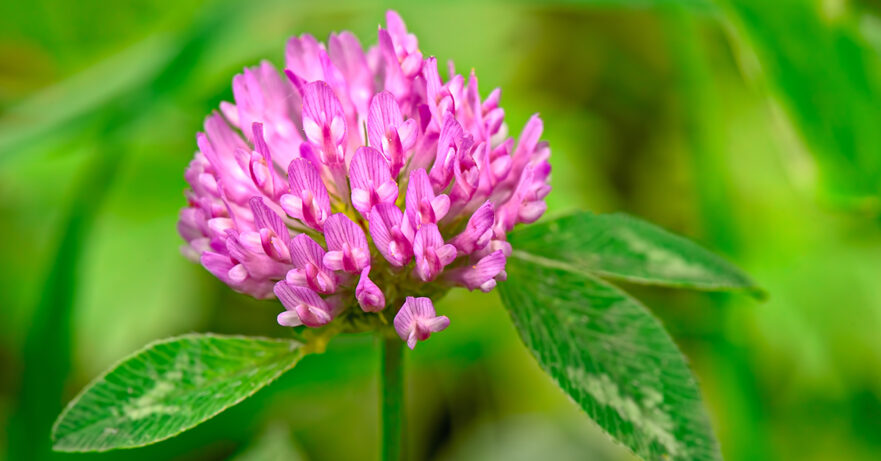In this monograph about red clover:
📖 Introduction | 🌱 Botanical Description | 📜 Traditional Uses | 🔍 Phytochemistry | ✨ Applications and Uses | 🛡️ Safety Profile
📖 Introduction
Red clover (Trifolium pratense) is a perennial herb that has garnered attention in herbal medicine primarily for treating menopausal symptoms and supporting bone health. Its vibrant pink flowers are not only a source of beauty but also of isoflavones, compounds that mimic estrogen in the body, making red clover a subject of interest for its potential health benefits.
| English Name | Red Clover |
| Latin Name | Trifolium pratense |
| Parts Used | Flower head |
| Traditional Uses | Menopausal symptoms, skin conditions, detoxification |
| Herbal Actions | Alterative, expectorant, antispasmodic |
🌱 Botanical Description
Scientific Classification
Trifolium pratense falls within the Fabaceae family.
Physical Characteristics
Red clover has trifoliate leaves marked with a characteristic white crescent and bears dense, round flower heads ranging from pink to red.
Natural Habitat and Cultivation Details
Originally from Europe, Asia, and North Africa, red clover is now cultivated and naturalized in many parts of the world. It thrives in meadows and fields, preferring well-drained soil and full to partial sun exposure.
📜 Traditional Uses
Traditionally, red clover has been used to support skin health, improve circulatory health, and as a detoxifying herb. Its role in traditional medicine also includes uses as a remedy for respiratory conditions and as a natural diuretic.

🔍 Phytochemistry (Active Constituents)
Red clover’s health benefits are attributed to its rich content of phytochemicals, notably:
- Isoflavones (such as genistein, daidzein, biochanin A, and formononetin): Mimic estrogenic activity, offering potential relief for menopausal symptoms like hot flashes and contributing to bone density maintenance.
- Coumarins: These compounds are known for their blood-thinning properties, contributing to improved circulatory health.
- Phenolic acids and flavonoids: They provide antioxidant and anti-inflammatory benefits, supporting overall health and well-being.
✨ Applications and Uses
In herbal medicine, red clover is utilized for:
- Menopausal symptom relief: Its isoflavones help alleviate hot flashes and night sweats and help in maintaining bone density in menopausal women.
- Skin health: It is applied topically or taken internally to support skin rejuvenation and address conditions like eczema and psoriasis.
- Detoxification: It is used in cleansing tonics for its purported blood-purifying properties.
The application of red clover in these areas is supported by its phytochemical makeup, especially its presence of isoflavones, highlighting its potential benefits for hormonal balance and skin health.
🛡️ Safety Profile
Red clover is generally considered safe for most adults when used in moderation.
However, due to its estrogen-like effects, it is advised to be used with caution by individuals with hormone-sensitive conditions.
Pregnant and breastfeeding women are recommended to avoid red clover because of its phytoestrogen content.
Individuals on anticoagulant medication are advised to exercise caution due to the presence of coumarins.
Consulting with a healthcare professional before beginning any new treatment is strongly recommended, particularly for those with pre-existing health conditions or taking other medications.
📃 Related Posts
🌱 Related Herbs

